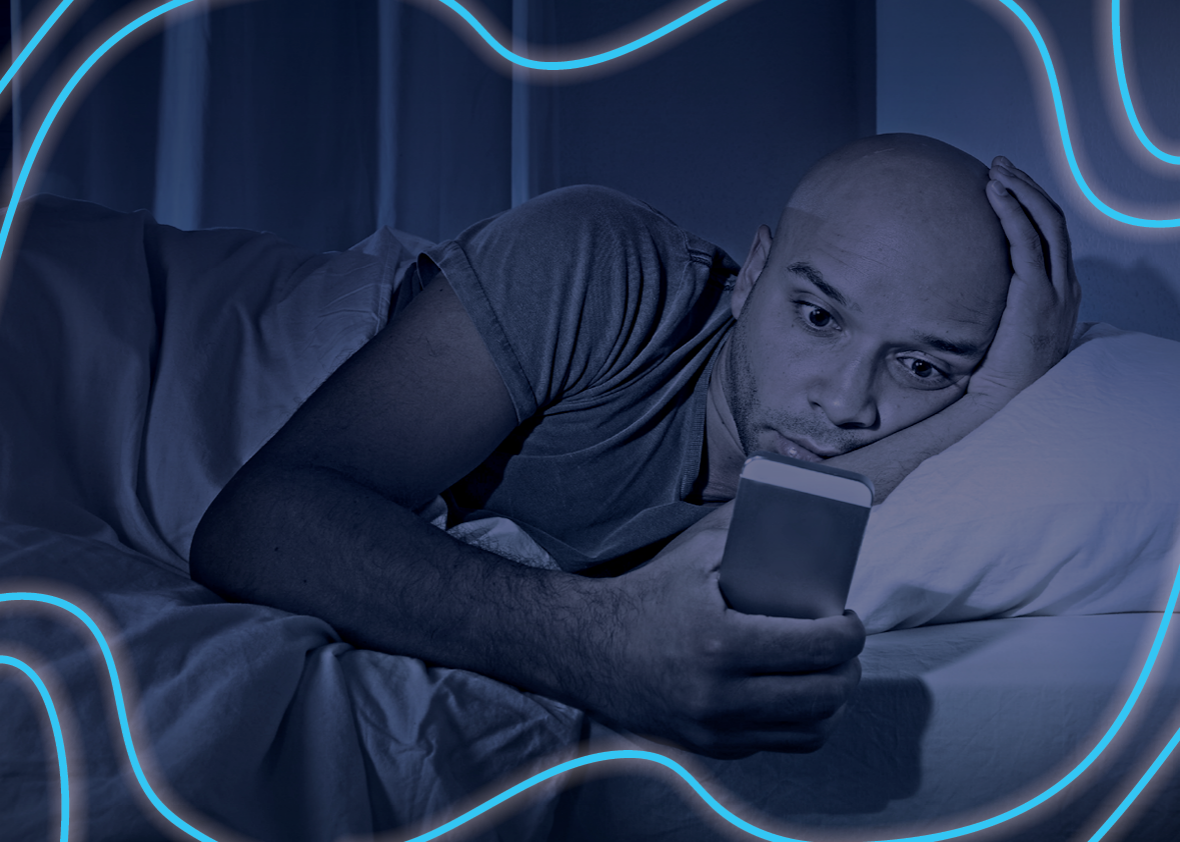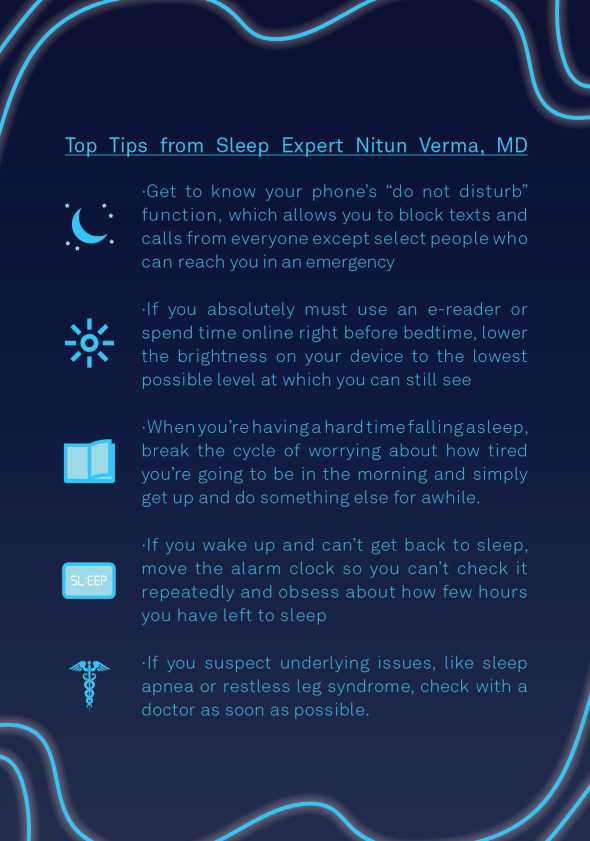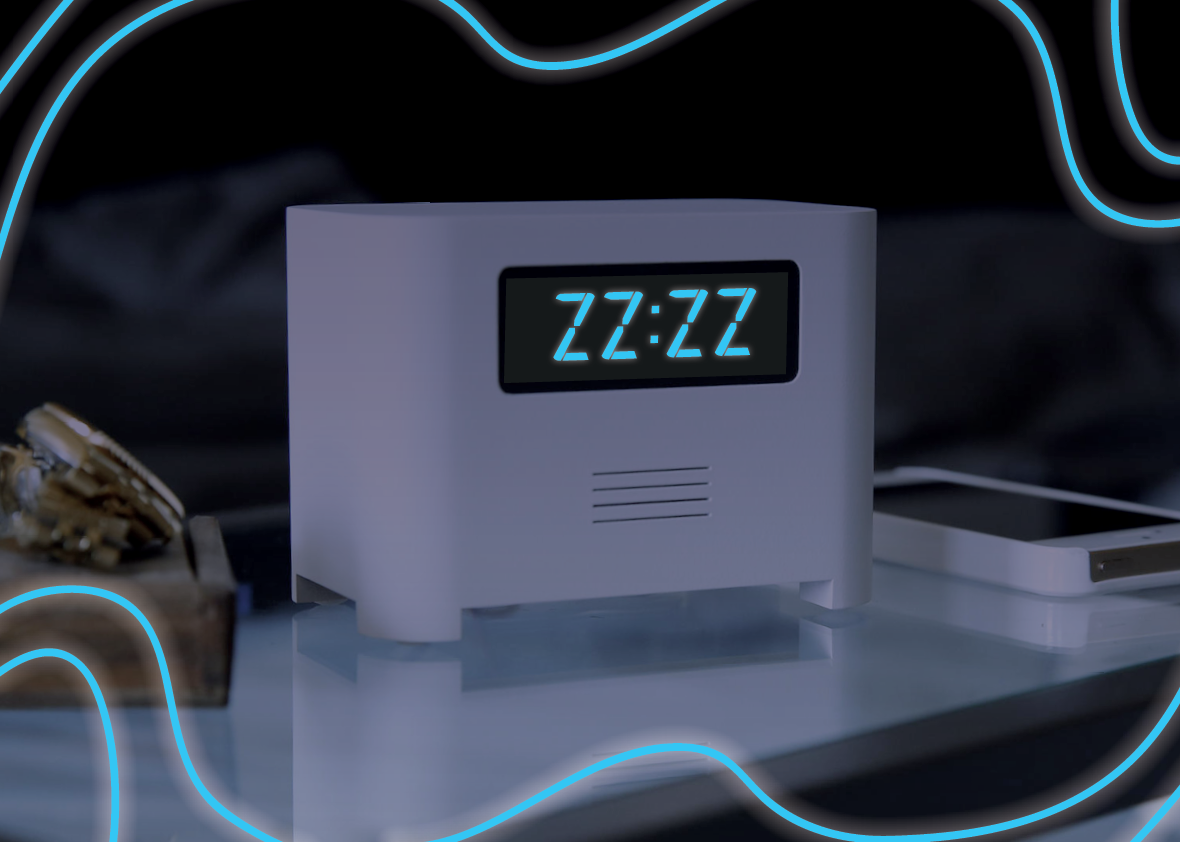
How to Get the Zzzs You Need

Americans are getting less sleep than ever, and it’s costing us sorely in lost productivity, poorer health, and the quality of our daily lives. Because of stress, pressure to succeed, bad habits, and our endless appetite for technology, we’re not sleeping enough, not sleeping well, and not sleeping regularly. If this is you—and chances are good that it is—you’re probably saying, yeah, but what can I do about it?
Start with your doctor, who can evaluate you for any conditions that might be getting in the way of good sleep. Then take a good look at your lifestyle and environment: What can you do to get more sleep, and better sleep? These are changes you can make right away that will make more difference than you can imagine.
Make Sleep a Priority
The National Sleep Foundation recently issued a new position paper recommending seven-plus hours of a sleep a night as the optimal amount for all adults. (Teenagers need eight to ten hours, and school age children nine to 11.) While everyone’s sleep needs are different and we’re all crazy busy, we need to make a few cutbacks in our jam-packed lives to give our minds and bodies their nightly tune-up.
Create a Sleep Schedule
“If you do nothing else, this strategy is the key to improving your sleep,” says Nitun Verma, MD, a sleep medicine specialist and Chief Medical Officer at PeerWell, a peer-to-peer chronic disease program. Going to sleep and getting up at regular hours prevents disruption of the body’s circadian rhythms (your body’s internal clock), which profoundly influence your hormones, metabolism, and other body regulations.
Start by planning to get seven and a half hours of sleep, working backwards from when you have to get up. Maintain that schedule all week, even on weekends. Skimping on sleep during the week and binging on weekends may help you feel more rested in the short-term, but does nothing but disrupt your biological clock even further.

Set the Mood
Your surroundings play an important role in soothing you to sleep—or keeping you awake and alert. Use this “sleep hygiene” checklist to make sure you’ve made your bedroom an environment conducive to rest.
- Light: From morning sunlight to streetlamps to electronic screens, any source of light signals to your brain that it’s daytime and stops you from feeling sleepy. Use blackout curtains, an eye mask or anything else that works for you to keep the room as dark as possible. While this is less of an issue during the dark days of winter, shades are essential in summer to block the early morning sun.
- Noise: While we can become used to a continuous stream of low sound, such as the distant roar of traffic, any sudden, loud, or unexpected noise sends an alarm, jolting us out of deep sleep. Protect yourself from such alerts with earplugs, a white noise machine or a fan.
- Temperature: Both an overly cold room and a hot and stuffy one can keep you awake. Tests have shown that temperatures between 60 and 68 degrees allow our core body temperature to decrease to the level that triggers sleepiness, while being hotter or colder leads to restless sleep. Experiment with temperatures, finding what works best for you, and keep layers handy to adjust your warmth during the night as needed.
- Mattress: Preferences vary enormously, often influenced by weight, gender, body type, and many other factors. Sleep habits are also important—in general, back sleepers are most comfortable with a firmer mattress with plenty of support for the lower spine, while side sleepers prefer slightly a softer mattress that allows the hip and shoulder to sink in and the spine to align, and stomach sleepers need the firmest of all. In any case, any mattress needs to be replaced at least every eight to ten years before sagging and compression begin to affect your posture during sleep and it’s well worth spending the time and money to find one that offers the support you need. Experts recommend visiting several stores and spending at least ten minutes lying on any mattress you’re seriously considering. Even better—choose a store that allows customers a trial period with free trade-in if a mattress isn’t right.
- Bedding: Start with an allergenic cover to protect the mattress from dust mites, and choose sheets made from breathable fabrics that don’t trap body heat, to prevent sweating. Perhaps most important is your choice of pillow, since it’s the key to supporting your head at the most comfortable angle to prevent neck and shoulder pain. When it comes to blankets and quilts, there’s no right answer, though experts warn that electric blankets and ultra warm blankets often keep temperatures too high for optimum sleep. Weight is another consideration; studies have shown that some people find heavier-weight blankets soothing, while others find that they limit movement.

Break Bad Bedtime Habits
That last hour before you go to sleep is crucial for letting your brain relax and let go of worries, stress, and to-do lists. Take a look at your evening routine and see if any of these sleep saboteurs could be impeding your wind-down. If so, changing your ways might result in more restful nights.
- Eating before bed: While some people find a light snack makes them sleepy, eating a heavy meal interferes with sleep as digestion revs up your circulation and metabolism.
- Alcohol: A nightcap can initially make you feel relaxed. But alcohol has a rebound effect as it’s metabolized, causing wakefulness and disturbed sleep in the second half of the night.
- Caffeine: Found in coffee, tea, soda and even sneaky places like chocolate ice cream, this stimulant can interfere with sleep by revving up your central nervous system. Some people can drink a cup of coffee before bed without ill effects but for others, even a bite of chocolate gets them buzzing. If this is you, consider reducing or eliminating your caffeine intake during the afternoon and evening.
- Smoking: Like caffeine, nicotine is a stimulant. Bedtime smoking is like drinking coffee at night: it can keep some people awake while others are immune to its effects.
- Exercise: Working out in the daytime or early evening can deepen sleep by tiring you out and easing stress and tension. But within a few hours of bedtime it boosts blood flow and gives many people a rush of adrenaline, making it harder to fall asleep.
- Naps: Because sleeping during the day throws off circadian rhythms, daytime naps can be the enemy of good nighttime sleep. That said, if you absolutely must get a few quick winks, limit your nap to 20–30 minutes.
- Mental Stress: Disengaging your brain from the pressures of the day is hard enough, but it’s almost impossible with a laptop, textbook, or stack of bills on your nightstand. Resolve to use your bedroom only for sleeping and sex, and your brain will learn to associate it with relaxation and restfulness.
Whatever the cause of your sleep problems, there are options. “Sleep science has made enormous strides and the important message is that there is help available,” says Nathaniel F. Watson, MD*, president of the American Society of Sleep Medicine. Take advantage of this help, and you’ll find your efforts more than rewarded when you discover what it feels like to have your body whirring with energy and your brain firing on all cylinders. Or, as Watson puts it: “See how it feels to go through your day invigorated and alert rather than struggling.”
The good news is that, whatever sleep issues you may have, there are many options and solutions that may help. Check out Why We Need Our ZZZs to get down to the nitty-gritty of what happens when we sleep—and Wake-Up Call to see what happens when we don’t.
This material is for general informational purposes only. It is not meant to replace the advice, diagnosis or treatment by a physician or other health care professional. Aetna is not the author of this content.
